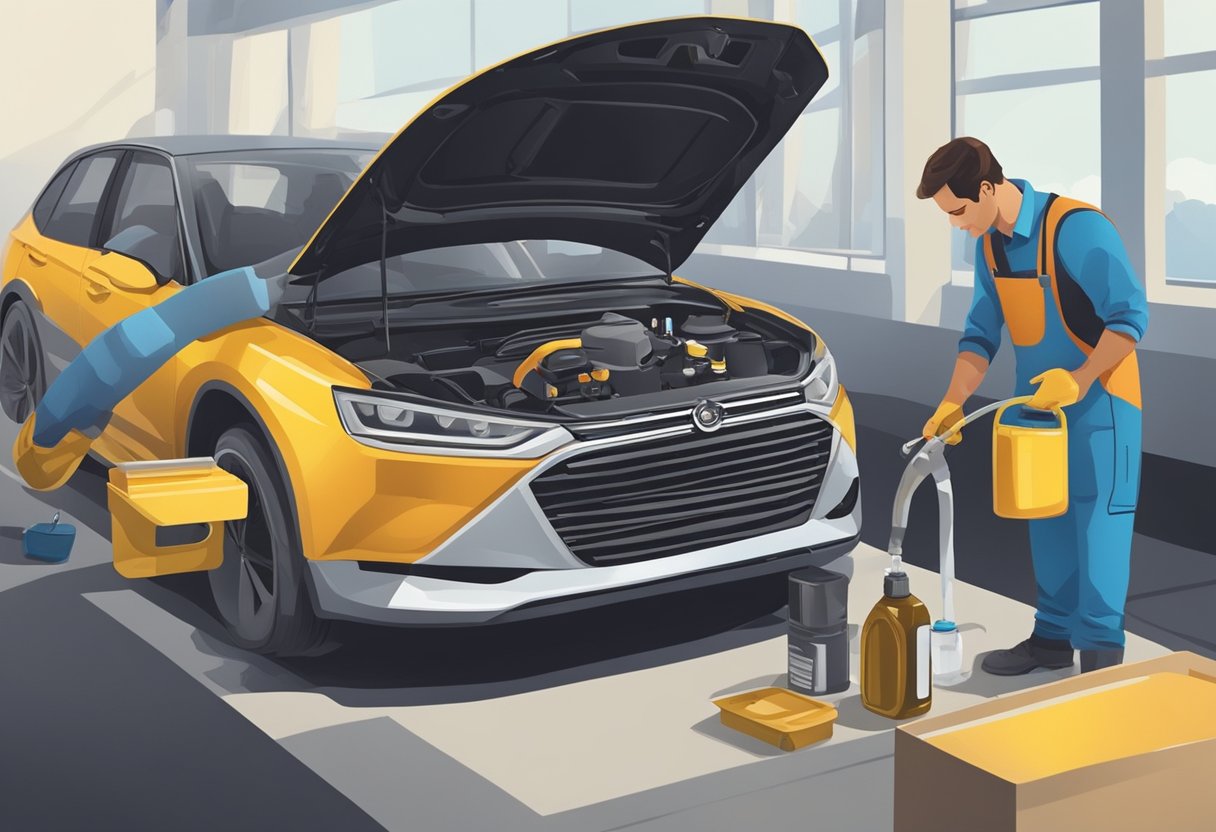How to Change Your Car’s Oil: Essential Steps for Beginners
Adding New Oil

Adding new oil to your car’s engine involves carefully pouring the oil and ensuring the amount is just right. It is essential to avoid spills and overfilling for optimal engine performance.
Filling with Fresh Oil
To begin, locate the oil cap on the top of the engine. Remove the oil cap by turning it counterclockwise. Use a funnel to prevent spills while pouring the new oil into the engine. Select the right type and grade of oil for your car, which is usually specified in the owner’s manual.
Pour the fresh oil slowly, stopping occasionally to check the level. Avoid rushing, as it can cause spills or overfilling. Typically, the car needs between four to five quarts of oil, but it may vary. After adding the recommended amount, wait a few minutes for the oil to settle in the engine before moving to the next step.
Checking Oil Level
With the fresh oil in the engine, you must check the oil level to ensure the correct amount has been added. Locate the dipstick, which is usually marked with a bright handle. Remove the dipstick and wipe it clean with a rag. Insert it back fully into its tube and then pull it out again to check the oil level.
The oil should be between the ‘min’ and ‘max’ marks on the dipstick. If the oil level is below the ‘min’ mark, add more oil as needed. Be cautious not to overfill, as too much oil can harm the engine. Once the oil level is correct, securely replace the dipstick and the oil cap.
By following these steps, your car’s engine will be filled correctly with new oil, ensuring smooth operation and longevity.
Starting the Engine
Once the new oil is in, the engine should be started and checked for proper function and leaks.
Checking for Leaks
After starting the engine, it’s crucial to look for any signs of oil leaks. Let the engine run for a few minutes, then turn it off and inspect the area around the oil filter and drain plug. Small drips or spots can indicate an oil leak, which needs to be addressed immediately to avoid damage.
Check under the car for any oil pooling. If leaks are detected, shut off the engine and tighten the oil filter and drain plug. Use a clean cloth to wipe any oil around these areas, and restart the engine to reevaluate. Persistent leaks will require further inspection and possibly more secure fittings.
Evaluating Engine Performance
With the engine running, monitor the oil pressure gauge on the dashboard. Ensuring that the pressure is within normal ranges is essential. Low oil pressure can signify a leak or an issue with the oil pump.
Listen to the engine for unusual sounds, such as knocking or tapping, indicating that the engine is not lubricated correctly. Check for smooth operation and consistent idle. If there are any abnormalities, turn off the engine and check the oil level again, adjusting as needed before running further tests.



